Hello!
Thought i should share a small test I did between analog and digital volume reduction. The application applies to active crossover filters. (In other words an extra analog pass trough on all levels vs bit depth loss on lover levels).
The devices I used were Yamaha RXV 800RDS (Amplifier with 6ch analog vol control feature) against Open DRC DA8 (8ch digital crossover with digital vol control) both used the same cabling and and were recorded in Cubase in 24 bits. The audio files were then normalized to make it easier to compare differences in character between all four.
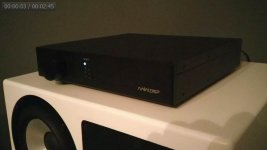
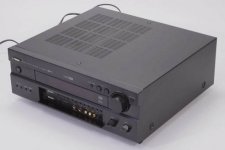
![[Real attenuation that was recorded].jpg [Real attenuation that was recorded].jpg](https://www.diyaudio.com/community/data/attachments/871/871621-d04f53c283aaec5756695a9cca49a8a2.jpg?hash=0E9TwoOq7F)
There were small differences in so-called HiFi-friendly music so I chose to continue only with a song that had a more crowded mix. The source was 50sec from an Original CD via S / Pdif. Track used:

NOTE! the test only shows differences not the actual sound because there is an additional AD conversion at the recording plus an extra during playback. The device I recorded with was the Motu UltraLite Pro soundcard.
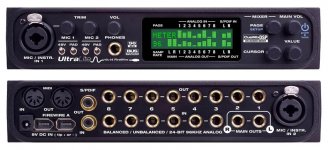
Part 2.
Most digital volume controls today have 32bit floating point as well as this in the above test. Therefore, it was interesting to see what this means. If the rumors are right, you should have 16 bits extra to trim your volume with before the CD stream losing bit depth.
Lowering via - DCD1290 with internal 16bit digital vol control
Lowering via - Open DRC DA8 vol control with 32 bit floating point enviroment.
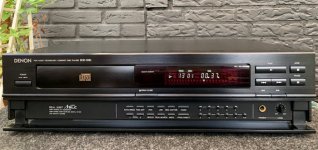

Part 3
As a small bonus, I also compared the character between these crossover dac's and a CD-DAC.
Denon DCD1290
Open DRC DA8
DCX2496 (with a French rca mod)


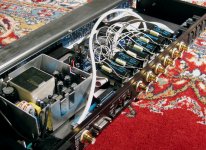
Tip:
It was easiest to hear differences in large headphones, and at best, import the files in Cubase or similar so you can start all at once and use "solo on selection" when switch between the files.
50sec Wavfiles for all test (zip)
https://www.amazon.com/clouddrive/share/I1Eu1znGAPYWgElP1L91AAPoFPebjymtUubS02Bv0k5
Thought i should share a small test I did between analog and digital volume reduction. The application applies to active crossover filters. (In other words an extra analog pass trough on all levels vs bit depth loss on lover levels).
The devices I used were Yamaha RXV 800RDS (Amplifier with 6ch analog vol control feature) against Open DRC DA8 (8ch digital crossover with digital vol control) both used the same cabling and and were recorded in Cubase in 24 bits. The audio files were then normalized to make it easier to compare differences in character between all four.


![[Real attenuation that was recorded].jpg [Real attenuation that was recorded].jpg](https://www.diyaudio.com/community/data/attachments/871/871621-d04f53c283aaec5756695a9cca49a8a2.jpg?hash=0E9TwoOq7F)
There were small differences in so-called HiFi-friendly music so I chose to continue only with a song that had a more crowded mix. The source was 50sec from an Original CD via S / Pdif. Track used:

NOTE! the test only shows differences not the actual sound because there is an additional AD conversion at the recording plus an extra during playback. The device I recorded with was the Motu UltraLite Pro soundcard.

Part 2.
Most digital volume controls today have 32bit floating point as well as this in the above test. Therefore, it was interesting to see what this means. If the rumors are right, you should have 16 bits extra to trim your volume with before the CD stream losing bit depth.
Lowering via - DCD1290 with internal 16bit digital vol control
Lowering via - Open DRC DA8 vol control with 32 bit floating point enviroment.


Part 3
As a small bonus, I also compared the character between these crossover dac's and a CD-DAC.
Denon DCD1290
Open DRC DA8
DCX2496 (with a French rca mod)



Tip:
It was easiest to hear differences in large headphones, and at best, import the files in Cubase or similar so you can start all at once and use "solo on selection" when switch between the files.
50sec Wavfiles for all test (zip)
https://www.amazon.com/clouddrive/share/I1Eu1znGAPYWgElP1L91AAPoFPebjymtUubS02Bv0k5
Last edited:
8 extra bits I think. 32 bit floats are 24 bits of mantissa, 8 bits of exponent. Extra bits like this are called guard bits, guarding against loss of precision.If the rumors are right, you should have 16 bits extra to trim your volume with before the CD stream losing bit depth.
Thanks for posting. 
Years back I did a similar test and found the differences very hard to hear, perhaps non-existent, and also hard to measure. Analog was a little noisier by measurement but not really noticeable by ear IIRC - and analog didn't track as well as digital. But both were minor differences.

Years back I did a similar test and found the differences very hard to hear, perhaps non-existent, and also hard to measure. Analog was a little noisier by measurement but not really noticeable by ear IIRC - and analog didn't track as well as digital. But both were minor differences.
I listened to the tracks and have to make some remarks.
1. The track is not suitable for comparisons, it is almost all high level and the many instruments hide the details.
Better would be a classical piece with piano and/or Violin with parts of low volume, only then would it be possible to distinguish between full and -15dB.
2. The Denon 1290 -11 (Attenuation equal to Opendrc -15) has the guitar on the other side, either R and L have been inverted or it is from another part of the track-
all the other tracks sound the same to me
1. The track is not suitable for comparisons, it is almost all high level and the many instruments hide the details.
Better would be a classical piece with piano and/or Violin with parts of low volume, only then would it be possible to distinguish between full and -15dB.
2. The Denon 1290 -11 (Attenuation equal to Opendrc -15) has the guitar on the other side, either R and L have been inverted or it is from another part of the track-
all the other tracks sound the same to me
Mark Tillotson >> thanks for clarifying that! make sense.
Pano >> Yes everything needs to be tested indeed! 🙂
bansuri >> Aha! I have swap the channels in Wavelab now and reupload.
Good Point, it may capture clearity and dynamics better!
Pano >> Yes everything needs to be tested indeed! 🙂
bansuri >> Aha! I have swap the channels in Wavelab now and reupload.
Good Point, it may capture clearity and dynamics better!
Digital volume controls are always going to reduce resolution. The loss can be minimized by applying dither before volume reduction. Also, there two basic types of digital volume controls, those inside dac chips (such as those made by ESS) and or in other hardware, and those implemented in software (e.g. in Windows Sound Engine -- which by the nature of its implementation brings its own new set of problems). In addition, one reason for digital volume level reduction before dac chips is to prevent distortion from intersample overs. The overall point I'm trying to make is that 'optimized volume control for digital audio' is a tricky area in which to experiment, and from which to draw general conclusions. It would likely be easy for someone new to the subject to produce erroneous experimental results.
Last edited:
Not sure I understand. Is there a loss of revolution with external digital control volume chip as the Muse for illustration where the input is an analog signal ???
Or is the discussion just about digital volume in dac chips ?
Or is the discussion just about digital volume in dac chips ?
Digital volume controls are always going to reduce resolution. .
Also analog volume reduces the resolution and far more than digital done with higher bit rate.
When you attenuate by say 20dB the analog S/N reduces by the same amount. Now adding 20dB gain it will remain with the reduced resolution.
Unlike the 24bit. It has 255 additional steps between each 16bit step and when doing the same process(-20dB and +20dB) and convert then to 16bit you get the same values back as before.
This procedure is done in every recording studio many many times and the result is a clean and transparent CD
Last edited:
Some confusions here; mainstream is that digital volume control, if implemented properly, is far superior to analog volume control, but not because of the SNR degradation in the analog domain (which is not much of an issue), there are other good reasons.
Volume Control Technologies - Benchmark Media Systems
Volume Control Technologies - Benchmark Media Systems
I see a few options for volume control:
* analogue potentiometer
* analogue phase cancellation (differential amps)
* digital IC potentiometer controlling analogue signal path (either direct or controlling transistor/tube)
* digital scaling in digital
* analogue potentiometer
* analogue phase cancellation (differential amps)
* digital IC potentiometer controlling analogue signal path (either direct or controlling transistor/tube)
* digital scaling in digital
Since my gain structure is good I rarely need much more than 10dB of volume range. A decent 24 bit DAC fed from 32 or 64 bit float DSP volume control works well for me. Once I tested, listened and measured, any fear of "loss of resolution" in digital volume control evaporated.
Exactly so. That’s why “loss of resolution” (or SNR degradation, thereof) in digital volume control is essentially a non audible red herring.
Last edited:
Interesting at TI, they've - apparently - moved to an analog architecture internally in their latest TAS digital input amplifiers.
If you look at their depiction of the TAS6424 they show volume control done digitally (as it is in the TAS5825 used in my Zoudio). The copyright date says 2016. One of their latest, the TAS5828 - I believe a upgrade in performance part over the '5825 - is depicted having an analog control internally to the chip. I wonder why the switch in thinking, design and execution?
No one as far as I know actually uses these parts in a commercially available amplifier, besides Zoudio. It would take a lot of DIY to be able to hear the difference between the '5828 and the '6424, for example. It's not like you can just go out and buy one and the other in a finished amplifier product.
If you look at their depiction of the TAS6424 they show volume control done digitally (as it is in the TAS5825 used in my Zoudio). The copyright date says 2016. One of their latest, the TAS5828 - I believe a upgrade in performance part over the '5825 - is depicted having an analog control internally to the chip. I wonder why the switch in thinking, design and execution?
No one as far as I know actually uses these parts in a commercially available amplifier, besides Zoudio. It would take a lot of DIY to be able to hear the difference between the '5828 and the '6424, for example. It's not like you can just go out and buy one and the other in a finished amplifier product.
Attachments
So they just use the gain control of the differential op amp. You could do something similar in a tube amp with varying the negative feedback.
Not sure I understand. Is there a loss of revolution with external digital control volume chip as the Muse for illustration where the input is an analog signal ???
There is nothing digital about the attenuation in Muse, it is entirely analogue.
Fwiw i have compared the digital VC of a Soekris dac to my very nice 40-position silver Shallco with a series Z-foil and shunt non magnetic Holcos.
Entirely subjective, instrument free comparison 🙂
The digital VC wins on all fronts. It's not a night and day difference, after all there are just two resistors and one contact added to the signal chain, but it's clearly better if they are gone.
The gain in my system is not high, so attenuation is generally low, perhaps no more than 15-20db
Entirely subjective, instrument free comparison 🙂
The digital VC wins on all fronts. It's not a night and day difference, after all there are just two resistors and one contact added to the signal chain, but it's clearly better if they are gone.
The gain in my system is not high, so attenuation is generally low, perhaps no more than 15-20db
Last edited:
I see a few options for volume control:
* analogue potentiometer
* analogue phase cancellation (differential amps)
* digital IC potentiometer controlling analogue signal path (either direct or controlling transistor/tube)
* digital scaling in digital
Not clear about #2, but I prefer #3 - digitally controlled analogue signal path using the Multiplying DAC.
Interesting at TI, they've - apparently - moved to an analog architecture internally in their latest TAS digital input amplifiers.
If you look at their depiction of the TAS6424 they show volume control done digitally (as it is in the TAS5825 used in my Zoudio). The copyright date says 2016. One of their latest, the TAS5828 - I believe a upgrade in performance part over the '5825 - is depicted having an analog control internally to the chip. I wonder why the switch in thinking, design and execution?
According to the data sheet the 5828 has a combined digital and analogue architecture for volume control.
I guess they do 6dB steps in digital which is super easy (also controlling the DC/DC converter) and 12*0.5dB steps in analogue, which would require a lot of calculations in digital.
Is there a loss of revolution with external digital control volume chip as the Muse for illustration where the input is an analog signal ???
Muse is a digitally programmed analog volume control, kind of analogous to something like stepped resistor attenuator implemented with digitally controlled relays.
OTOH, the discussion here about digital volume controls refers to digitized audio data being multiplied by an attenuation factor to change the numerical values of individual samples before they are converted back to analog.
Last edited:
...This procedure is done in every recording studio many many times and the result is a clean and transparent CD
Modern DAW software mixing busses are mostly implemented these days with 64-bit floating point math. Digital volume controls in that case effectively do not reduce resolution. However, eventually the data must be truncated to a lower bit-depth. For CDs it is reduced to 16-bits. After that, turning down the volume will cause some loss of resolution. Personally speaking, I usually avoid going any lower than -6dBFS if using a computer digital volume control with a high performance dac.
Regarding digital volume controls in dacs, ESS and AKM do it very well. However, for PCM audio the dac internal volume controls do not appear to protect against intersample overs, at least not for ESS (as Benchmark has pointed out). The only reason for not using the internal dac volume control at all with something like AK449 was if the dac chip was being operated in DSD volume bypass mode. In case I would probably use some type of stepped resistor attenuator volume control, or else maybe a Muse chip after the dac analog output.
Last edited:
- Home
- Source & Line
- Digital Line Level
- Analog vs Digital volume test

